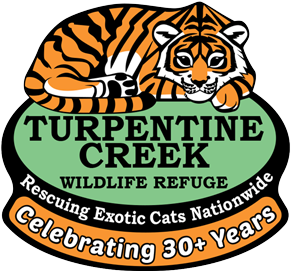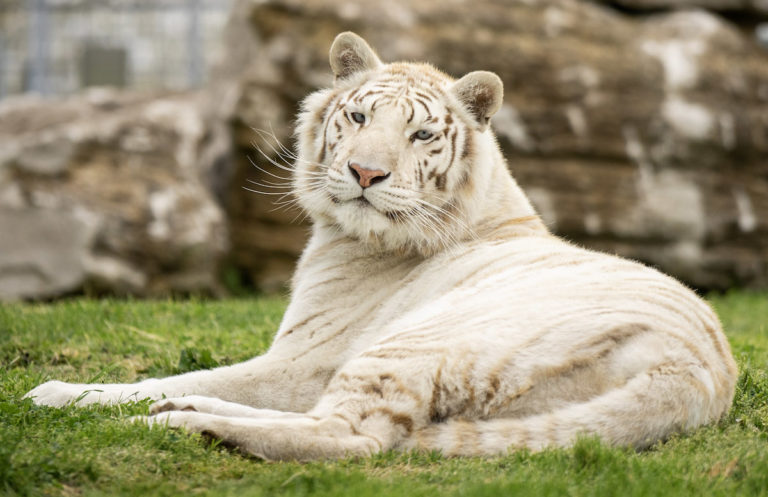
Diligent Care and Compassion
The mission of Turpentine Creek Wildlife Refuge (TCWR) is to provide lifetime refuge for abused and neglected “Big Cats” with emphasis on tigers, lions, leopards, and cougars. With the care, safety, and welfare of animals being the number one priority at the Refuge, it is important to all of us at TCWR that each animal is treated with the dignity and compassion they desperately need and deserve. Because of this mission, TCWR has developed a reputation for compassionate care across the country; specifically with law enforcement, universities, and others who share a commitment to the welfare of animals –both big and small.
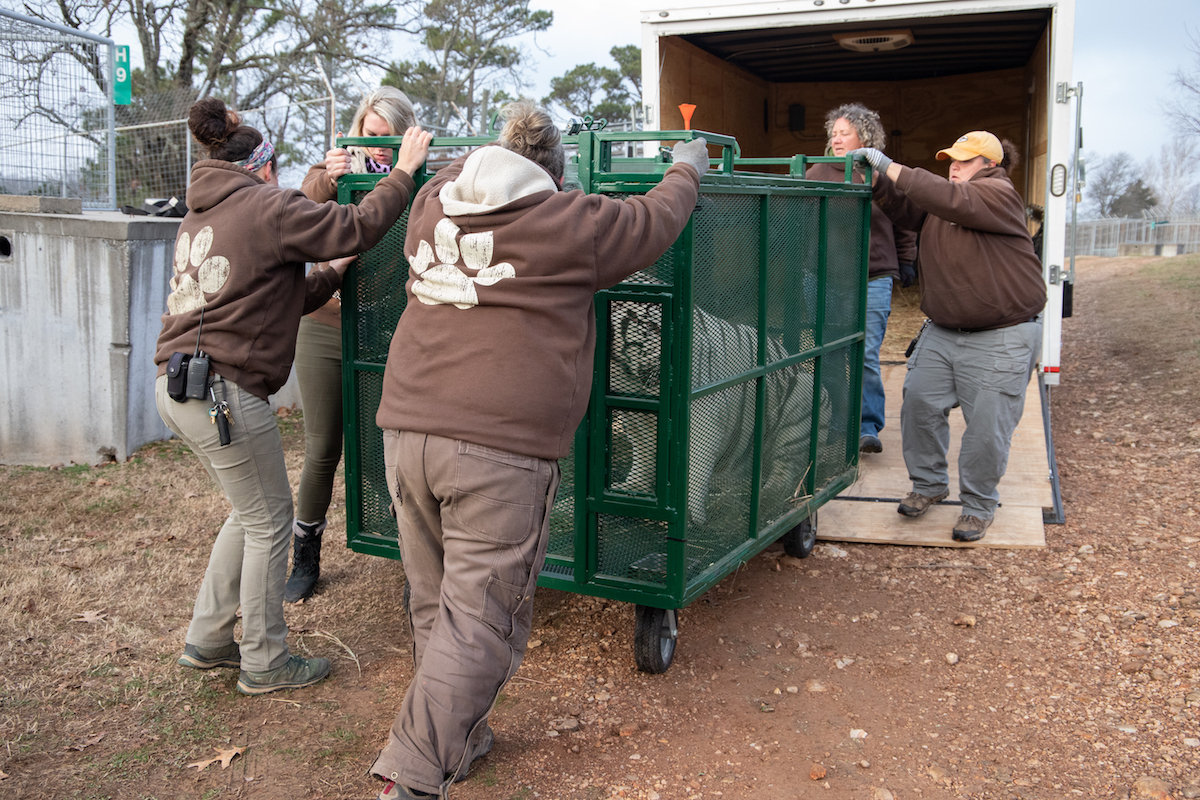
Rescuing Cats
Prior to being transported to Turpentine Creek, the animals are first examined by a veterinarian at their original location. When it is determined that the animal is healthy enough to travel, the process of loading them onto a rescue trailer takes place. Once having arrived at TCWR, the rescued cat is then evaluated by our own veterinarian. At this time, they will be provided with any additional medical attention determined necessary and then quarantined for four to six weeks before being integrated into the existing population. When integrating new big cats into our habitats, measures are undertaken over a period of weeks and sometimes months before the animals are allowed to be housed with one another. Often, there will be a need to re-arrange the living spaces of existing animals, and the construction of additional housing becomes a necessity as well.
Each of these circumstances needed to be addressed to ensure optimal animal care comes with its own financial strain. Because of the financial magnitude involved in rescuing and housing exotic animals, TCWR depends heavily on donor support.
Routine Care
No matter the weather,
- All cages and habitat areas are cleaned weekly. Animals are fed daily according to their dietary needs.
- Water dishes are cleaned and filled three times daily.
- Animals are carefully observed daily. We conduct wellness exams anytime behavioral changes or signs of illness are noted to avoid emergencies with preventative care. Dental exams and cleanings are included with wellness exams to help prolong good quality of life. This is why most TCWR animals live 2X what they could in the wild. Over 50% of our animals are seniors, many in their 20’s.
Enrichment Play
Enrichment activities are used to help improve the quality of life of all of the animal residents. Providing a diversity of activities helps to prevent boredom and enables animals to partake in behaviors that they would experience in the wild. If you would like to donate toward this initiative, these are some items our animal residents love:
- Boomer Balls, Pumpkins, Retired Christmas Trees, Bowling Balls, Perfume, or Boxes
Spay & Neuter Policy
We have a no-breeding policy at TCWR per our Global Federation of Animal Sanctuaries accreditation. All males are either neutered immediately upon arrival, placed alone, or placed with other males We never place new big male cats with other established males, only if a pair was raised together. Animals are sterilized to prevent breeding after they are given time to adjust and a full wellness exam can be performed, before pre-existing pairs are slowly reintroduced.
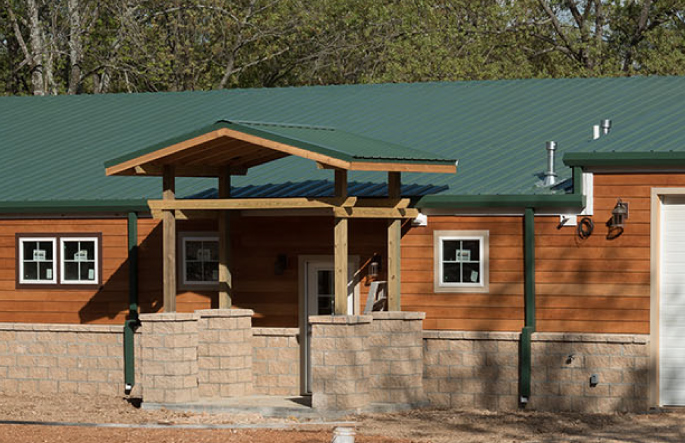
Veterinary Care & Procedures
In August of 2016, after endless amounts of hard work and with the tremendous support of our donors, TCWR opened its first onsite veterinary clinic. We especially would like to thank the following donors who gave above and beyond to ensure the success of this great endeavor:
David R. Rodgers, Scott and Vicki James, Bill and Nancy Silvers, Fred and Sherry Sieber, Jim and Candy Trogolo, In Memory of Margarite Borchardt, Terry J. and Janeen McGuire, Martha L. Foster, James and Barbara Goldsmith, Beverly Staedke, Mass Medical Storage, Maggie Whitt, K. Vasudevan, The Farrell Foundation, Mari and Arnold Fagin, Samuel Freeman Charitable Trust, Amy Patterson, Idexx Laboratories, Oak View Animal Clinic – Dr. Karen Sherman, In Memory of Dianna Powers, In Honor of Joann and Gus Ortiz, and Holloway Construction, Inc.
The Jackson Memorial Veterinary Hospital is a clinic that allows us to perform all necessary medical procedures, including testing blood samples, performing x-rays, surgical procedures, and a recovery station furnished with camera monitoring to enable 24-hour-care, and heated floors.
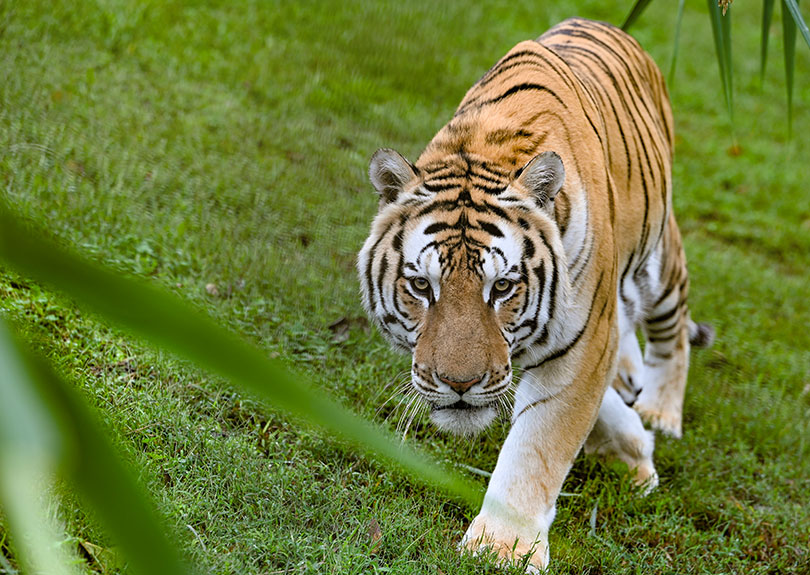
Behavioral Management Program
TCWR uses a bridge and reward training method. The desired behavior is coupled with a reward (food) using a high-pitched whistle called a “bridge.” It is called a bridge because it connects the behavior with the treat –whenever the whistle is heard the animal anticipates the reward, creating a sense of excitement and reinforcing the desired behavior.
Animal Husbandry involves the tasks performed in order to ensure the emotional and physical health of animals in captivity and is an incredibly important aspect of sanctuary life. Therefore, the purpose behind the behavioral management program is two-fold. First, this form of animal husbandry allows TCWR’s animal care staff to encourage the animals to partake in enrichment activities –helping to prevent boredom and stress. And secondly, it allows for animal care staff to address health issues or perform routine medical check-ups without the use of sedatives.
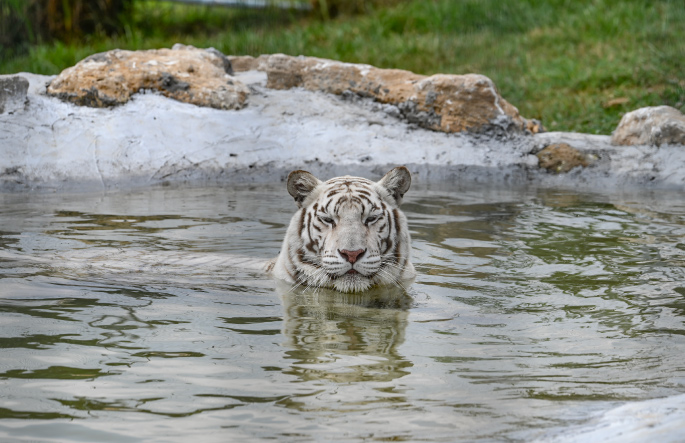
Extreme Weather Conditions
In order to combat the detrimental effects of extreme weather, each habitat is equipped with tools necessary to help regulate the temperatures of the animals living in them. During the hot summer months, a combination of swimming pools, mist systems, and water baths are provided for the animals. Additionally, each animal at the Refuge has access to shaded areas at all times –shade can be provided through actual shade clothes, trees, large habitat benches, and cement dens. These cement dens provide not only insulation from the weather but also a safe, secluded place for privacy.
During extremely cold weather, the animals that require extra insulation are provided straw and blankets in their dens. Our leopard habitat, which opened in July of 2010, includes a heated building for the comfort of the animals. Per our accreditation all African cats’ and bear dens are heated in the winter, along with those of our elderly population at Rescue Ridge.
